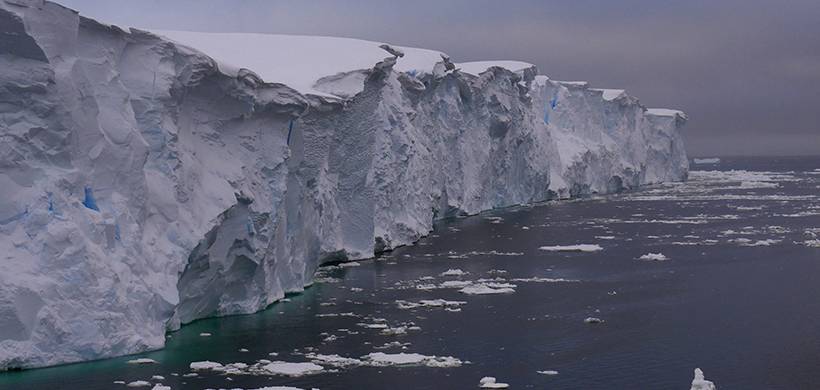
Some of our articles have related catastrophic scenarios that frighten us as to the uncertain future they let us foresee.
Today, let's continue with a new example and take a look at the Thwaites Glacier.
This glacier is located in western Antarctica. It is part of the West Antarctic Ice Sheet. It was named in honor of Fredrik T. Thwaites, a geologist specializing in cold zones. But it has another name; much more evocative: the "glacier of the end of the world". English speakers call it “doomsday” - doomsday. An entire program !
But why such a name?
For one simple reason: Doomsday is melting.
It is not the only glacier whose observation shows a melting. However, the consequences could be of an entirely different magnitude with this one. Indeed, Thwaites is a gigantic glacier of extraordinary proportions. With an area of 200,000 km ², that is to say a third of the area of a country like France, it is particularly sensitive to temperature variations and has been the subject of all the attention of scientists for several years.
Very recently, researchers have shown that global warming, evident in this region of the globe, is accelerating its melting and what would result from it is worthy of a disaster film.
If such a glacier were to lose its mass and become detached, it would cause the level of the oceans to rise dramatically and to an extent never before seen. Anna Wåhlin, oceanographer at Gothenburg University, explains that “Global sea level is affected by the amount of ice on land . However, the greatest uncertainty in the forecasts is the future evolution of the West Antarctic Ice Sheet ”.
In order to support their research, the scientists decided to take a dive to study the glacier from below. It was with the help of a submarine, called Ran, that they were able to measure the strength, temperature, salinity and oxygen content of the hot and salty ocean currents that roam the depths there.
What they discovered is not reassuring. Quite the contrary. The colossus with the feet of ice falters. While they thought this huge glacier was well anchored to the ocean floor thanks to its pillars, thus sheltering it from currents, they noted on the contrary that hot water flows actively circulate in an area where the balance of the glacier is seriously threatened. Anna Wâhlin specifies that “The way and the places where this warm water attacks the Thwaites Glacier are influenced by the shape of the seabed and the base of the pack ice , but also by the properties of the water itself. "
This is the first time that such submarine movements have been observed. The rise in water temperature makes scientists fear a reversal of the ice structure that could jeopardize the stability of the glacier. As the researchers explain: "This flow of hot water mixes with other waters under the glacier and would degrade several major" pinning points "of the glacier. Clearly, this unprecedented level of ice melt could cause the glacier to stall, pouring millions of m3 of fresh water into the ocean, which, at the same time, would significantly accelerate the rise of the earth's waters.
If this were the case, the level of the oceans would rise by 65 cms. But that's not all. As in any good scenario, catastrophes follow one another. If the Thwaites Glacier were to break down, it would lead with it to a glacial collapse in the western part of Antarctica. The water level of the globe would then rise by 1.80 meters!
As Anna Wählin reminds us : “These are the first measurements ever taken under this glacier. They will help us to better model its dynamics ” .
The glacier is melting and the trend is unlikely to be reversed. Let us simply cross our fingers so that the next data collected by the researchers are more reassuring and that the various models make it possible to avoid the worst.
Posted on 2021-04-13 15:58








Comments